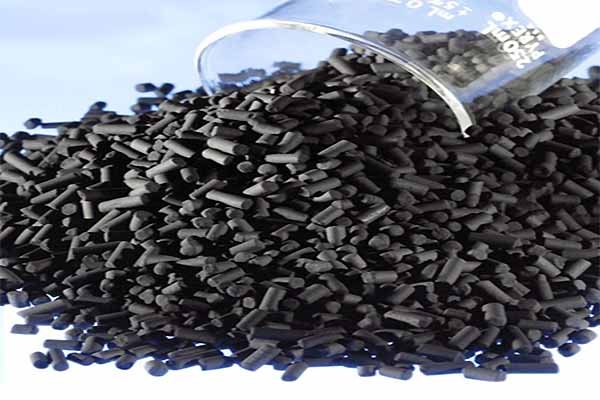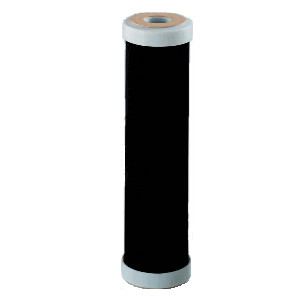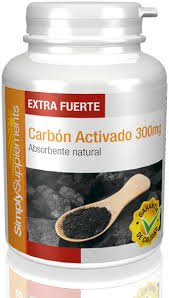OBTAINING ACTIVE CHARCOAL FROM COCONUT, FOR USES IN WASTEWATER TREATMENT AND GAS EMISSIONS

Activated carbon is a general term that refers to a whole range of products derived from carbonaceous materials.
From the shell of coconut shell it is possible to obtain different types of activated carbons for diverse applications varying the preparation conditions.
This natural fiber has excellent mechanical, chemical and physical qualities to be used for various applications. In addition, coconut fiber is of vegetable origin, so it is biodegradable, renewable, recyclable and abundant since there are coconut trees in many countries of the world.
The objective of this post is to show the use of the coconut shell fruit that is obtained from the Cocos nucifera plant, as the main material for the extraction of activated carbon used for the treatment of wastewater and in the emissions of gases that cause high contamination in the various ecosystems.
In recent years, there has been a growing interest in the study of materials, this is due to its wide applicability in the field of environmental chemistry, industry and medicine. Activated carbon is used as filters in the purification or recovery of liquids and gases, as well as for the elimination of odors in wastewater and industrial, control of emissions, etc. It should be noted that these carbons can vary according to their chemical, physical or textural properties.
The general purpose of this research is activated carbon, as it is intended to examine the methods of obtaining it and once obtained, characterize it in order to reach a conclusion of its feasibility that it has as an adsorbent in the different types of particles, either in its gaseous or liquid state.
This research beyond its scientific and investigative connotation aims to have two central aspects: to know the obtaining and application of activated carbon, as well as to raise awareness about the importance of environmental preservation.

.jpg)
Why does this idea come up?
Currently, most of the world's population, both in developed and developing countries, is exposed to high levels of environmental toxins, so much so that, in October 2013, the WHO classified environmental Toxics by Vehicles contaminated air as a human carcinogen within Group 1, after analyzing and reviewing the most recent scientific literature evaluating the carcinogenicity of air pollution.
On the other hand, the growth of the so-called environmental diseases or emerging diseases, such as the multiple chemical sensitivity SQM, are causing sanitary alarms to jump, since the magnitude of the problem can surpass any established forecast.
It is very important to be aware that it is not necessary to be exposed in a special way, but that daily exposure is toxic and will lead to health problems later or later.
By defining the levels of these factors, we can design effective solutions for the improvement of their environment, reducing their exposure and therefore reducing the effect on health, either preventive or palliative.
80% of global wastewater is not treated adequately to prevent pollution and the spread of disease, a situation that particularly harms the least developed countries and is reflected in the report "Wastewater Management", prepared by the Program of the United Nations Environment Program (UNEP)
The report notes that the damage caused by wastewater to ecosystems and biodiversity is "serious" and warns that it poses a threat to human health and economic activity.
Pollution is a very serious environmental problem in Venezuela and occurs at all levels, every day more beaches, rivers and lakes are being diagnosed as contaminated mainly by lack of treatment of wastewater from homes and industries, specifically the The oil industry pollutes in an important way by oil spills in the sea and by deposition of oil waste in freshwater bodies such as Lake Maracaibo.
Since 1950, Lake Maracaibo has suffered serious pollution problems due to the discharge of domestic and industrial wastewater and multiple spills of petroleum products.
The air also suffers from pollution thanks to the emission of toxic gases from industries, automobiles and oil companies. This occurs mainly in highly populated cities such as Caracas. Maracaibo, Valencia where you can easily observe a dense layer of SMOG over the cities. This corresponds to all the toxic gases that are thrown into the environment and that accumulate in the atmosphere.
Due to this problem, the need arises to develop this project to look for the solutions that afflict humanity today due to the high contamination that occurs due to the non-treatment of wastewater and gas emissions; to attack this problem, it is proposed to use the coconut shell from which the activated carbon will be extracted, which will act as an adsorption of the particles both in their liquid and gaseous forms that accelerate the levels of contamination.
Applications of this research
Establish the procedures for obtaining the activated charcoal from the coconut shell.
Establish other types of obtaining activated carbon.
Application of activated carbon for uses in wastewater treatment and gas emissions.
Propose the use of activated carbon for the preservation of the environment.
Propose active carbon in automobiles, industries that emit gas into the atmosphere and purification of wastewater that pollute rivers, lakes and seas.
Where does this idea come from?
In the need to implement new tools that allow the conservation and preservation of the environment, emerging the need to create activated charcoal from the coconut shell since it is biodegradable and occurs 90% worldwide.
The objective is to use the waste material that is produced in the production of coconut oil, 90% of the volume of raw material ends as waste, and only 5 or 6% as oil.
It is a material with an internal structure - at a molecular level - similar to that of a sponge, which allows the retention of particles within its structure. "In this case, activated carbon from coconut husks has the advantage of being a material that already has this internal structure, so the research and technological development work focuses on increasing that structure to produce a material of greater aptitude for the removal of organic pollutants. Given its characteristics, from the point of view of the area, the wear resistance and the granulometry, it is a product of very good quality ".
It should also be mentioned the large areas that can cover the active carbon that goes from:
Food: Wine discoloration, Juice treatment
(Orange / Apple), Sugar purification, Elimination of PAH in
Oils, etc ...
Automotive: Gasoline Filter Tanks, Superconductors.
Catalysis: For herbicide production, Cyanide production of
Chlorine, Catalyst conductors.
Mining: Recovery of Gold and other precious metals.
Water: Drinking Water Treatment. Water treatment
Residuals Process Waters
Combustion gases: Elimination of pollutants: Dioxins and
Metals (Hg).
Air / Gas: Solvent recovery, Elimination of Mercury in
LNG plant, H2 purification, tobacco filters, biogas.
That is why the importance of the approach of this research project that focuses on the recovery of wastewater and gas emissions.
Bibliographic reference:
http://tesis.uson.mx/digital/tesis/docs/20980/capitulo1.pdf
https://www.lenntech.es/adsorcion-carbon-activado.htm
https://www.aguasresiduales.info/revista/libros/manual-del-carbon-activo
Congratulations @fernandogonzalez! You have completed some achievement on Steemit and have been rewarded with new badge(s) :
Click on any badge to view your own Board of Honor on SteemitBoard.
For more information about SteemitBoard, click here
If you no longer want to receive notifications, reply to this comment with the word
STOPI read a case study on the potential of coconut shells being converted to activated carbon granules in an effort to reduce operational costs for R.O and Waste Water treatment plants. Great article. SteemOn!
Could we use agricultural refuse? The coconut farming industry has already exploded and the farming itself is pretty bad for the environment, could we use just the waste from that idustry and other farm industries since it is all carbon and abundent?